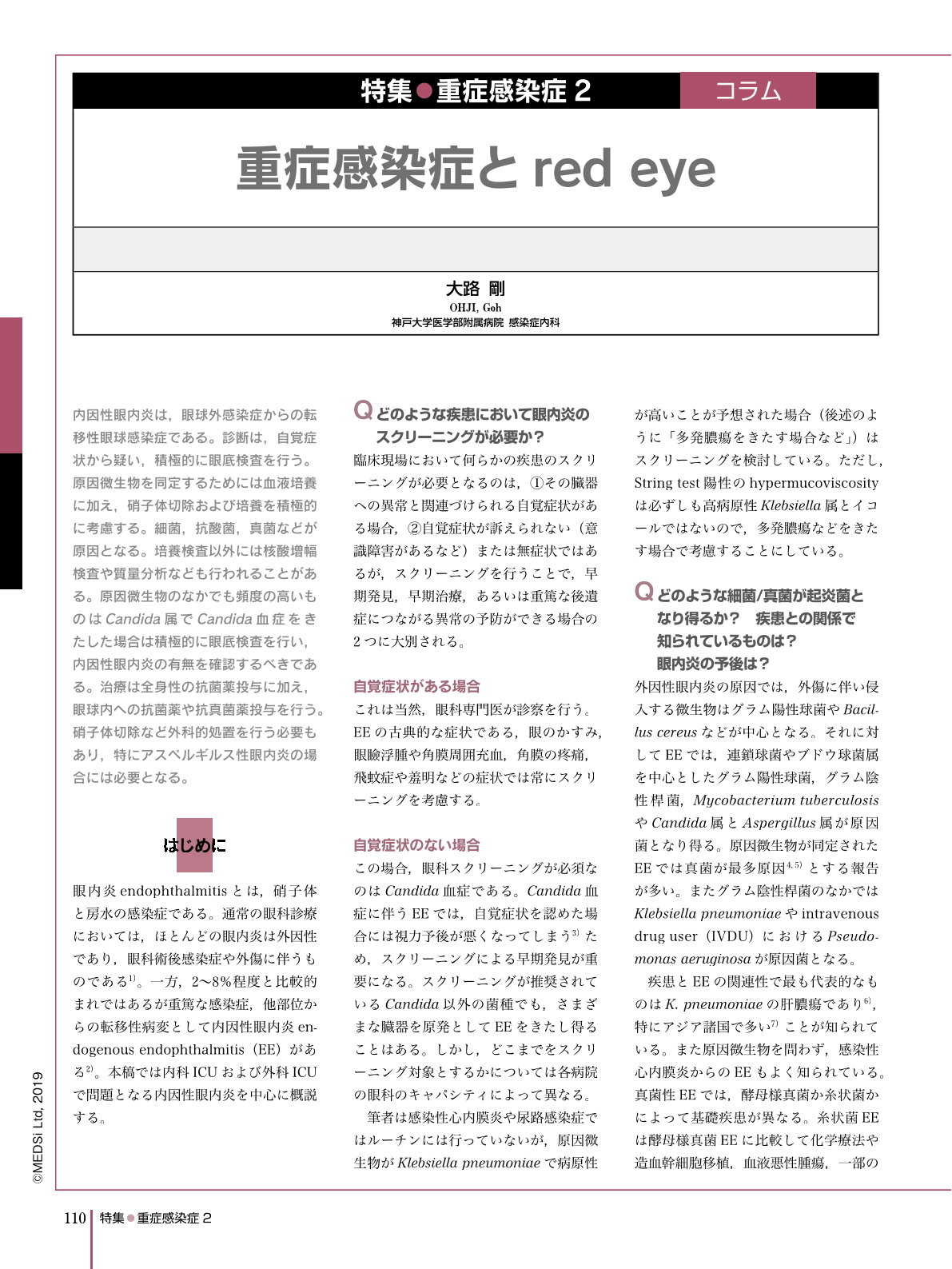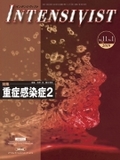Japanese
English
- 有料閲覧
- Abstract 文献概要
- 1ページ目 Look Inside
- 参考文献 Reference
内因性眼内炎は,眼球外感染症からの転移性眼球感染症である。診断は,自覚症状から疑い,積極的に眼底検査を行う。原因微生物を同定するためには血液培養に加え,硝子体切除および培養を積極的に考慮する。細菌,抗酸菌,真菌などが原因となる。培養検査以外には核酸増幅検査や質量分析なども行われることがある。原因微生物のなかでも頻度の高いものはCandida属でCandida血症をきたした場合は積極的に眼底検査を行い,内因性眼内炎の有無を確認するべきである。治療は全身性の抗菌薬投与に加え,眼球内への抗菌薬や抗真菌薬投与を行う。硝子体切除など外科的処置を行う必要もあり,特にアスペルギルス性眼内炎の場合には必要となる。
Endogenous endophthalmitis is less common than exogenous endophthalmitis but is still a severe eye infection, which results from hematogenous spread of organisms from a distant source. The clinical course is typically acute, requiring prompt diagnosis and treatment to save vision in the affected eye. Physicians should be aware of several risk factors for this disease such as an immunocompromised state, intravenous drug abuse or a catheter related blood stream infection. The patient's symptoms are also important to suspect endophthalmitis. Blood cultures, diagnostic vitrectomy or real time polymerase chain reaction are used to identify the causative organisms. MALDI-TOF is also used to identify the causative organism. Ophthalmoscopy must be considered for patients with candidemia, since candida species are the most common organisms for endogenous endophthalmitis. Systemic antibiotic therapy and intravitreal antibiotic therapy are the mainstays of treatment of patients with bacterial endophthalmitis. Surgical therapy should be considered in patients with severe bacterial endophthalmitis or fungal endophthalmitis, which may include pars plana vitrectomy, especially in patients with aspergillus endophthalmitis.

Copyright © 2019, MEDICAL SCIENCES INTERNATIONAL, LTD. All rights reserved.


